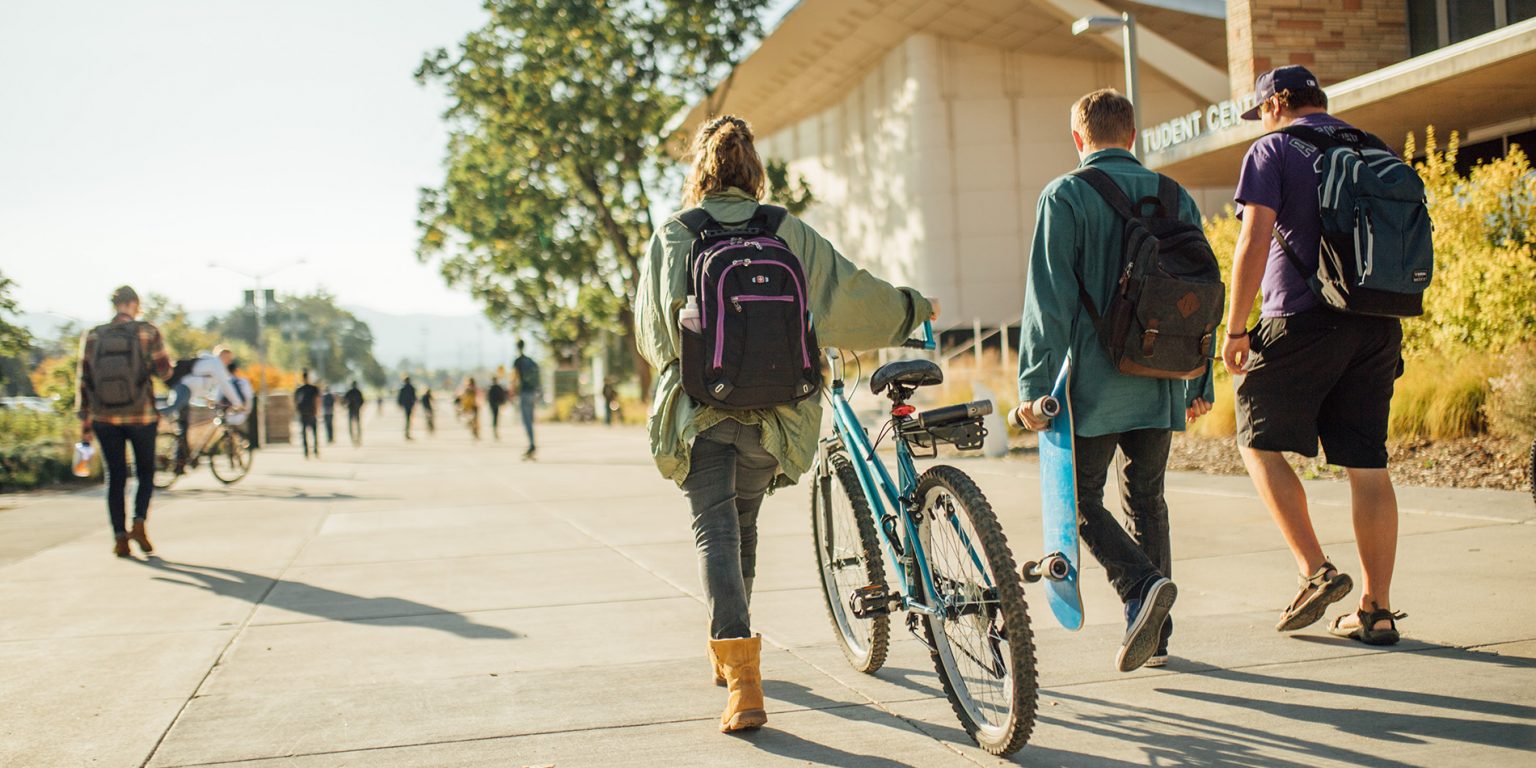
Colorado State University has adopted the internationally recognized Vision Zero planning initiative to enhance safe travel and mobility across and throughout campus. The adoption is the result of recommendations from the Vision Zero Transportation and Mobility Safety Task Force created by President Joyce McConnell in 2019. It was convened by Fred Haberecht, campus planner for Facilities Management, to study and assess safety regarding all modes of movement and transportation on campus.
Tens of thousands of people travel to and around CSU on a typical day. The task force collected data, evaluated and analyzed accident reports and enforcement statistics from across campus for several years, and contracted with three engineering consulting firms to evaluate infrastructure and complete a transportation behavior and traffic law compliance study. The data and analysis were used to identify specific trends, practices, compliance issues, and areas of heavy traffic, conflict and mobility concerns. Using these insights, the task force developed a holistic and comprehensive plan that will support campus transportation mobility and safety for the future.
“The mix of cars, buses, bicyclists, scooter riders, people using mobility devices and pedestrians on our campus is a testament to the sustainable mode choices available in our community,” said task force member Erika Benti of CSU Parking and Transportation Services. “People should feel confident and safe in whichever mode they choose. CSU’s Vision Zero initiative will guide decisions about infrastructure, policy, education and enforcement practices to support a safe transportation system.”
According to Haberecht, the overarching goal of Vision Zero is a safe and accessible campus for visitors to CSU and the entire campus community. The task force’s recommendations fall within four broad areas: enforcement, infrastructure, policy and standards, and education. It will present a clear framework to foster a safer and more accessible campus by Fall 2021.
Changes planned
Planned physical changes will build on investments made over the past decade and will include additional separation of bike, pedestrian and vehicle modes, speed mitigation of vehicles and bikes, improved accessibility, and an overall more predictable and consistent environment for all users.
“The CSU campus is dynamic and our Vision Zero initiatives will need to be flexible enough to continually provide a safe and accessible environment to our ever-changing campus,” said Haberecht, who also chairs the task force. “There will be some firsts on campus in coming years such as our first bike roundabouts, protected bike lanes and bus guideways, and some returning campus features such as traffic lights and speed tables.”
The task force was formed shortly after a CSU student was struck by a vehicle and died from his injuries. It will continue to assess the safety of CSU’s transportation system with the goal of preventing similar tragedies in the future.
According to Benti, Vision Zero also is timely as it relates to CSU’s Courageous Strategic Transformation. By supporting sustainable transportation modes, it will help CSU reduce greenhouse gas emissions from transportation, which currently make up 20% of total emissions on campus.
“A focus on inclusive transportation facilities designed for the safety of all road users supports the people of CSU so they can flourish,” said McConnell. “As we strive to uphold our land-grant mission of access and student success, CSU is committed to ensuring the safe movement of our students, employees and visitors to, from and through our beautiful campuses.”
For more information, visit the CSU Vision Zero website.